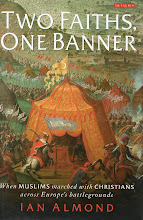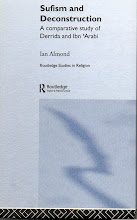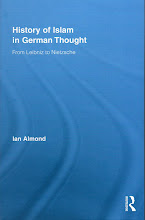 by Ramu Nagappan. Seattle: U of Washington P, 2005. vii +246 pp
by Ramu Nagappan. Seattle: U of Washington P, 2005. vii +246 ppRamu Nagappan's informative book poses what seems, at first, to be a fairly standard question: how do South Asian writers confront, represent, and ultimately work out the question of social suffering? What follows is an illuminating series of approaches to three texts— Amitav Ghosh's The Shadow Lines, Rohinton Mistry's A Fine Balance, Salman Rushdie's Shame—as well as the short stories of S. H. Manto and the films of the Tamil director Maniratnam. A pressing concern to show how the mechanisms of texts such as The Shadow Lines and A Fine Balance close down avenues of hope and agency, either by ending in "benign self
absorption" or a "downward spiral . . . [of] overheated pessimism," also tries to show how fictional reenactments of social trauma, even in such moments of political resignation and impotency, paraodoxically supply not only relief, but a new series of choices for the reader (61, 198). The metaphor of "decompensation" that Nagappan uses to examine this Janus-like function of the text really deserves to be foregrounded in the title, and not buried away in the middle of a paragraph on page 149:
The physiological term "decompensation" can refer to the failure of the heart muscle to maintain adequate bloodcirculation; in the case of fiction, the term denotes a phenomenon marked by the failure of language to circulate,to signify meaning in the face of catastrophe.
The result is that Speaking Havoc is a book interested, more than anything else, in the failure of language; how texts (and films) fail to represent trauma, how they fail mimetically to do justice to injustice, to resolve the causes of the social suffering they observe, and the positive effects such textual/cinematic failure has for its audience.
This Rortyian emphasis on the constructive function of irony as an awareness of such failure (Contingency, Irony, and Solidarity is cited several times) inevitably explains why writers such as Rushdie and Ghosh do so well in the book—and why a more conventional text of
social realism such as A Fine Balance is seen as depending on nothing more complicated than a "Dickensian mode of exaggeration" (62). Nevertheless, what follows are some very pertinent readings of all five figures. Ghosh's book is presented to us as a text that "charges [us] with representing the world" and therefore discovers a new kind of post-metaphysical responsibility—the role, says Nagappan, of Richard Rorty's liberal ironist, a "paradoxical, self-critical stance" (44, 54). In the very act of decompensation, The Shadow Lines compensates
with the narrating of this failure. The Shadow Lines's absence of closure, in other words, its recourse to solipsism and "benign selfabsorption," is itself a way of dealing with the impossibility of its task. Unsurprisingly, this level of redemptive decompensation (if you will forgive the oxymoron) at its most sophisticated is not extended to A Fine Balance, "a novel which tries to provide aesthetic compensation for trauma" (64). There is an impatience in Nagappan's treatment of Mistry that at times seems unfair—even though the critic correctly observes a recurring anxiety of impotence and emasculation in the novel, and even if it is difficult not to agree with the "narrative of unremitting tragedy" that always runs the risk of transforming into melodrama. If Ghosh's dismantling/reassembling of metaphysical consolation is explicit, A Fine Balance reiterates this gesture, one can't help feeling, on a more basic, unreflective level—no Joycean examination of mimesis, then, just a good Dickensian yarn. The work of S. H. Manto is read, perhaps a touch predictably, as "explod[ing] the key terms 'territory' and 'nation' that underlay . . . the construction of national consciousness," (88) although Nagappan provides an interesting semibiographical interpretation of Manto's outsider status in South Asian literature (transforming the Forties' writer, it has to be said, into a kind of Liberal-Ironist-Before-Liberal-Irony-Was-Invented figure).
And yet it is Rushdie in whom the critic seems to place the most faith for a truly significant postmodern politics, one that employs linguistic playfulness, political satire and ironic self-referentiality to bring forth new models of solidarity and community. Maniratnam's
popular films Bombay and Roja both are credited with subtle critiques of paternalistic nationalism and the power, as popular media, to reach infinitely more contingent selves than the English educated elites who read Rushdie, Mistry, and Ghosh, and yet it is Rushdie who seems to epitomize for Nagappan (in no uncritical fashion) the most positive consequences irony has to offer for the entire question of social suffering. For all the eloquence and lucidity of Nagappan's book, however, there remains a rather ironic problem of representation. One of the difficulties with Speaking Havoc is that it talks so much about "who owns suffering," about "true voices from the margins," about who has the right to speak on behalf of whom, that somewhere toward the middle the reader feels tempted to put such questions to the author himself (11, 88). Is it peevish to point out that, in a book on social suffering in South Asia, three of the four authors discussed write in a language spoken fluently by ten percent of the sufferers concerned? Nagappan quotes Salman Rushdie's now infamous declaration that "the true Indian literature of the first postcolonial half century has been made in the language the British left behind" (a claim Amit Chaudhuri's groundbreaking anthology of Modern Indian Literature has successfully contested), and then comments without any apparent irony: "In the anthology of fiction that Rushdie subsequently edited, Manto is the only non-Anglophone Indian writer to make an appearance" (126), a position Nagappan has clearly replicated in his own choice of texts. Although Nagappan expresses a frustration with "postcolonial theory" in the introduction and its irrelevance to "audiences that have . . . no interest in theoretical formulations" (20), the majority of the writers he has chosen—Rushdie, Ghosh, Mistry—belong clearly and incontrovertibly to the postcolonial canon. The practical omission of Mahasweta Devi, Bengali writer and full-time political activist, is particularly disconcerting (she receives a footnote on page 209).
In fact, despite frequent references to English educated elites, the whole question of what it means to write a novel about Bombay in Toronto—and what it means when that novel becomes one of the bestselling Indian novels in recent years—is largely overlooked.
This is not simply to bang the tired old "Why-don't-Indian-Writers-Live in- India?" drum; a masterpiece such as The Shadow Lines remains a masterpiece, quite regardless of its author's current postal code. To be fair to Nagappan, some space is given to such dissenting voices—for example, Kumkum Sangari's complaint that the West's "postmodern preoccupation with the crisis of meaning is not everyone's crisis" is given some consideration (128); and yet the treatment of Aijaz Ahmad's critique of the postcolonial is disappointing, given the high quality of the rest of the book. Ahmad's position on Rushdie and the larger question of what he stands for is dismissed as "vitriolic" and "distrustful," springing from a "repressive mode of textual engagement" and a "bristling sense of personal injury" (125, 135, 139). His objection to Rushdie as representing a Western-educated elite is seen as merely "prioritiz[ing] the politics of location" (125). Given Nagappan's own frustration with postcolonial theory for not paying enough attention to "local contexts and nuances," Ahmad surely deserves better than what he gets (20). And it is precisely in this circumvention of the debate that Nagappan, perhaps consciously or not, makes his position most clear.



